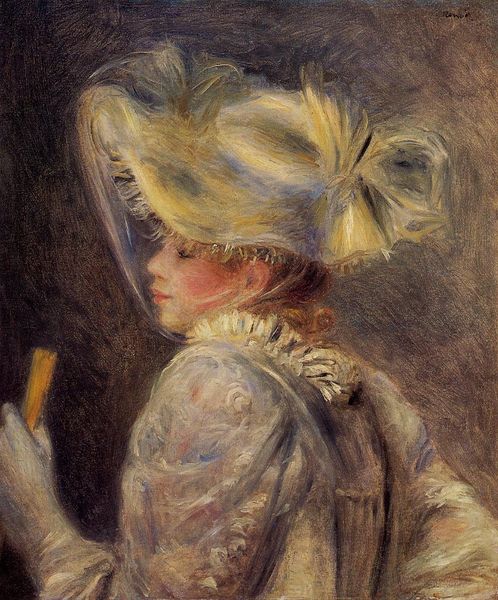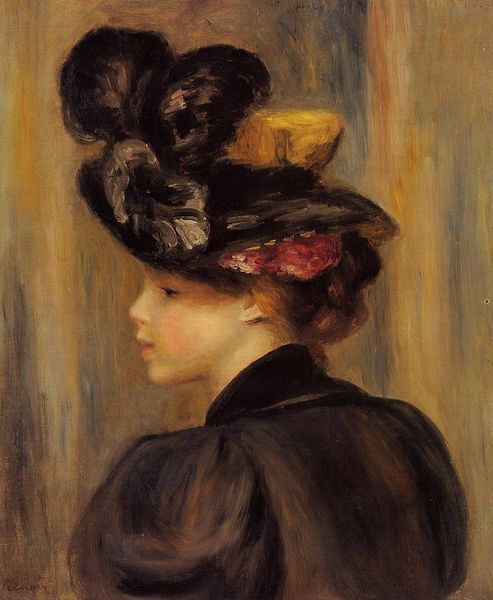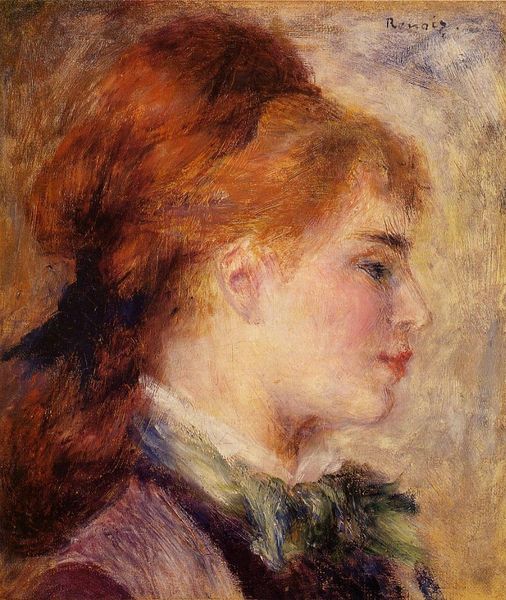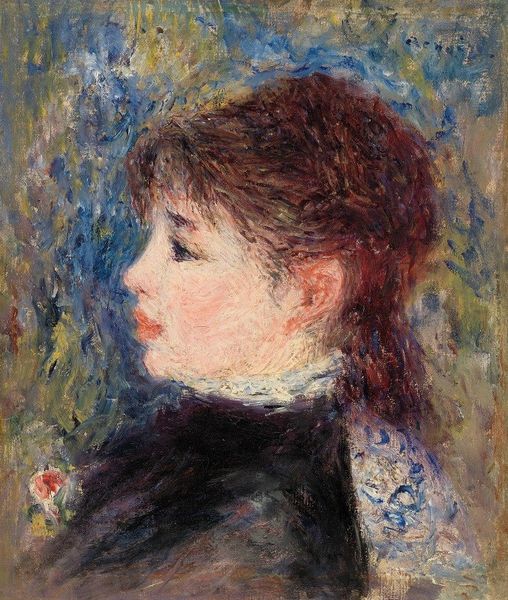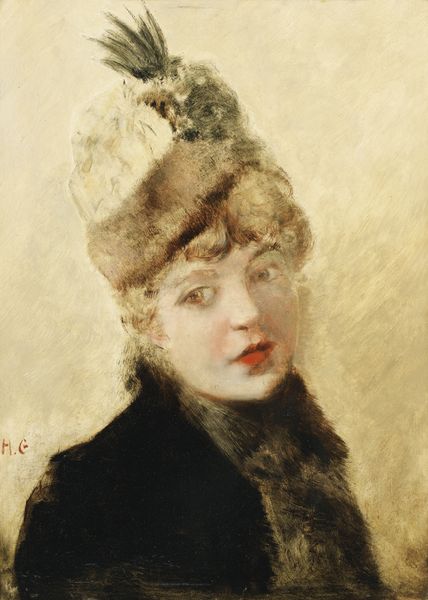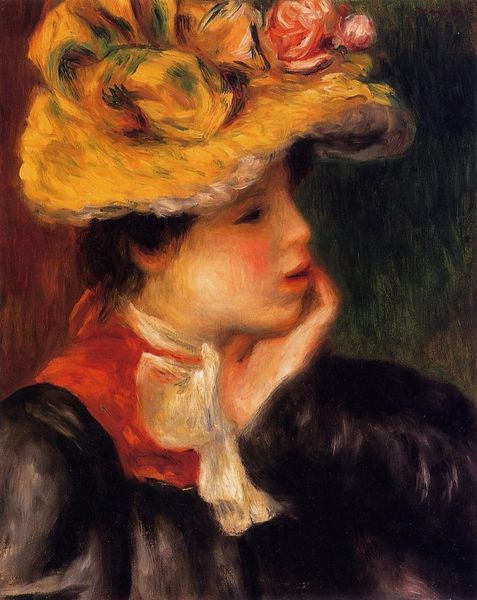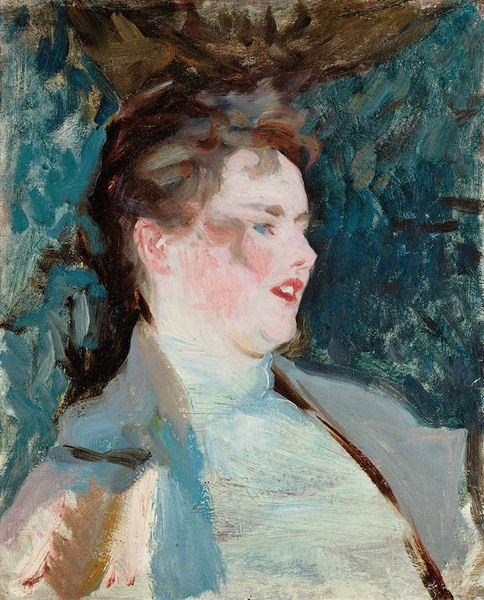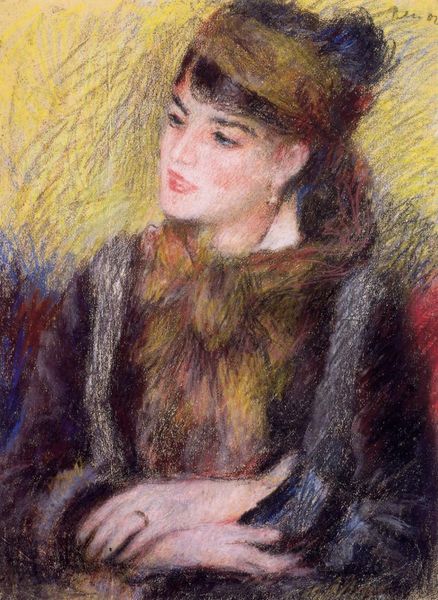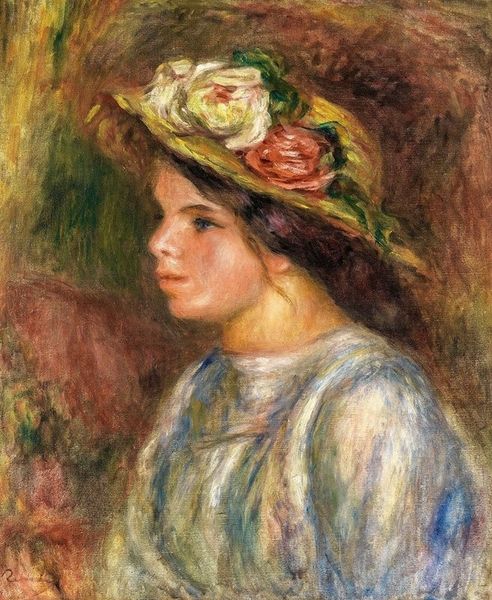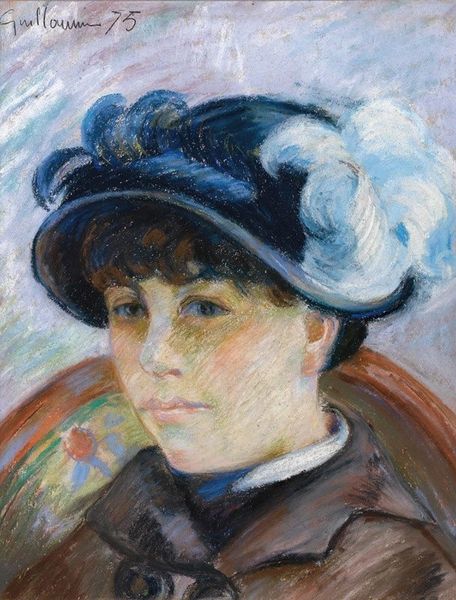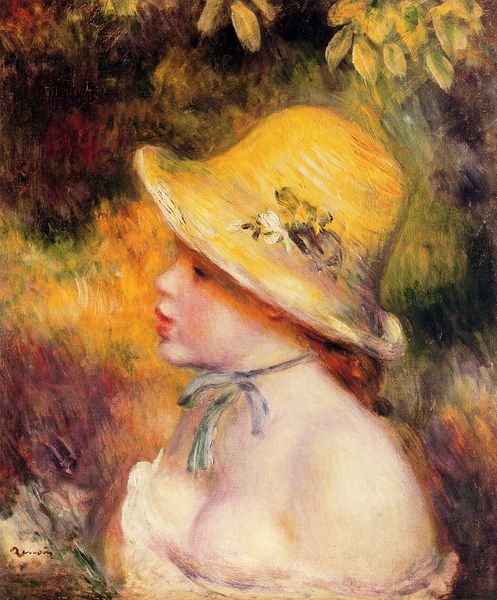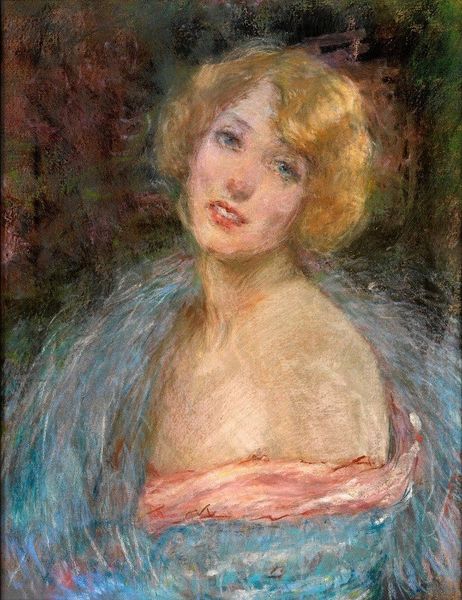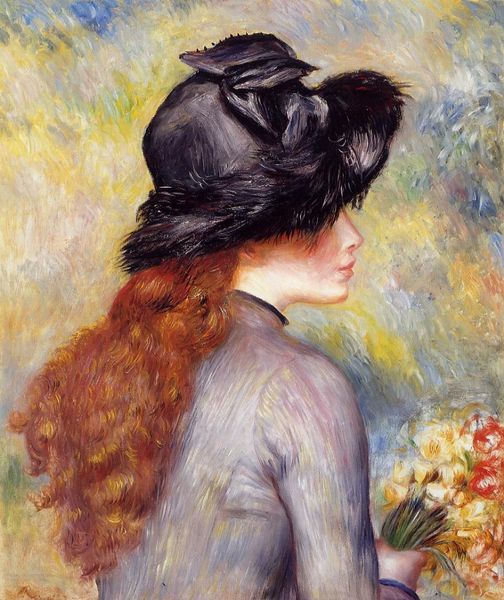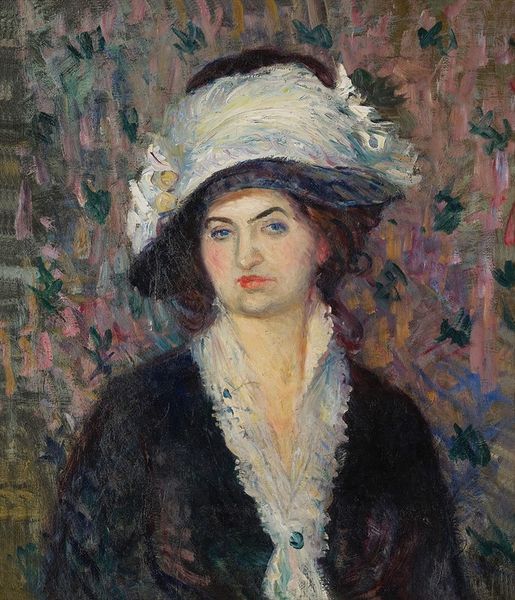
Copyright: Public domain
Editor: Here we have Renoir’s “Head of a Young Girl,” painted in 1878 using oil. I find it to be quite soft, the colors blending into each other so smoothly. What stands out to you in this piece? Curator: Well, I see more than just softness. This painting, beyond its aesthetic appeal, represents a specific social class and the performative nature of femininity in 19th-century France. How does the girl's attire, the hat in particular, contribute to your understanding of her social standing and the expectations placed upon young women during that era? Editor: I suppose the hat is quite elaborate. Maybe it shows she has some means, or is trying to present herself that way? Curator: Precisely. The elaborate hat, the delicate brushstrokes rendering her skin, and her overall demure posture all construct a carefully curated image. How might this relate to contemporary discussions around the male gaze and female representation in art? Consider that Renoir was also criticized for idealizing women. Editor: It's like she’s aware of being watched, almost posing. So, it raises questions about how women were perceived and how theyNavypresented themselves. I hadn't thought about that before. Curator: Exactly. Art becomes a powerful tool to examine those power dynamics. This artwork encapsulates those social and historical nuances about that time period. It’s a glimpse of class, gender, and representation all rolled into one. Editor: I'll never see another Impressionist portrait the same way. There's a lot more depth here than I originally assumed. Curator: Agreed. And by questioning the representation and social dynamics of Renoir's time, hopefully, we may better contextualize representation within art, today.
Comments
No comments
Be the first to comment and join the conversation on the ultimate creative platform.
